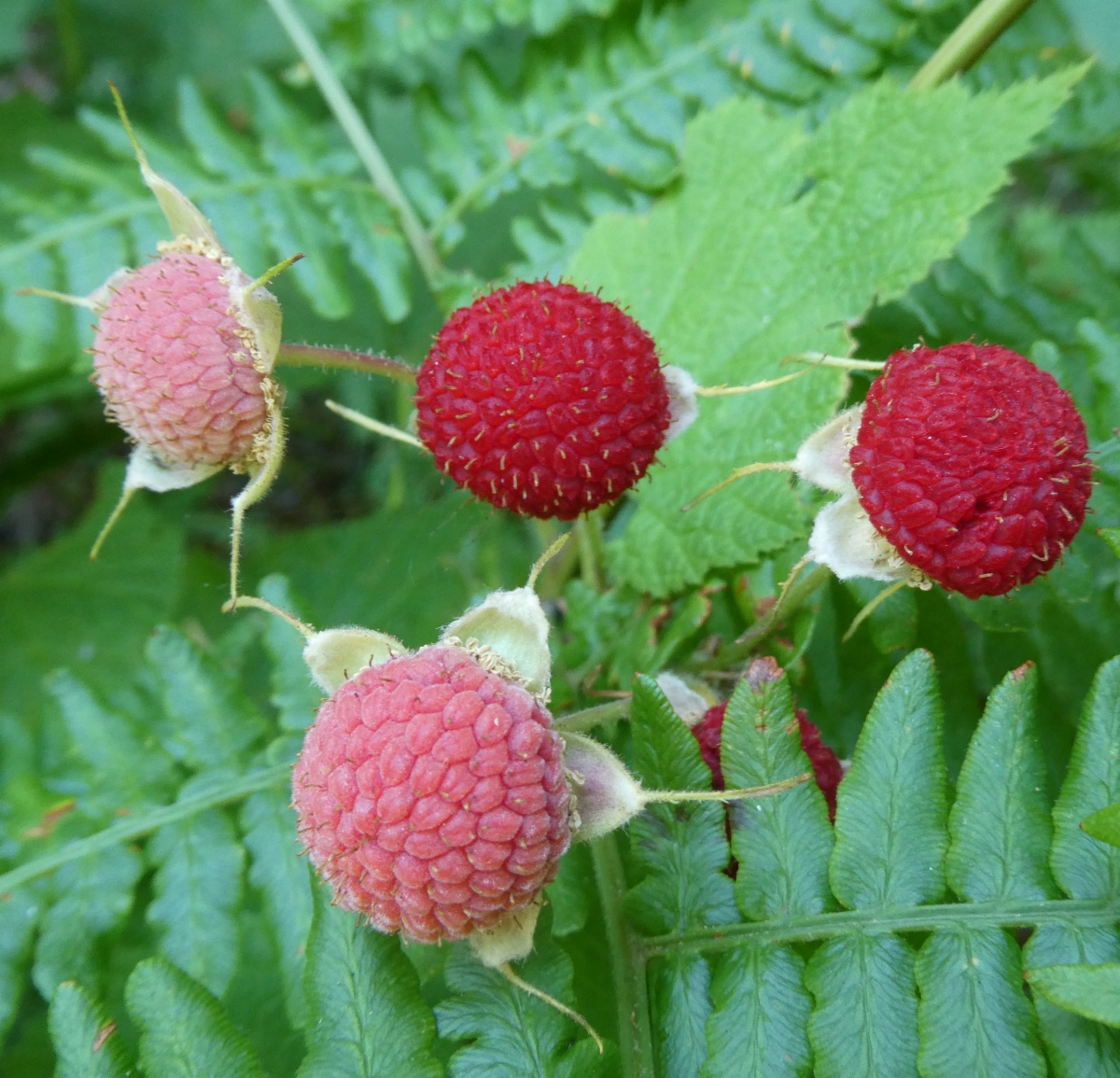

Rubus parviflorus (Thimbleberry) is a beautiful, thicket-forming, deciduous shrub adorned with a dense foliage of velvety, maple-like, green leaves. From late spring to mid-summer, fragrant white flowers, 2 in. (5 cm), appear in showy clusters. They are followed by vibrant scarlet berries which mature in mid to late summer and compliment the lush foliage. The stems are thornless, making fruit harvest easier. Fruits may be eaten directly off the shrub or used to make flavorful jams and jellies. They are also valuable seasonal food for birds and mammals. The leaves turn brilliant orange to maroon shades in fall. While self-fertile, Thimbleberry will produce more berries if several shrubs are present. Native to western and northern North America, Thimbleberry is found in a range of habitats but prefers moist and open sites. It is found in shrublands, riparian zones, and deciduous, coniferous, and mixed forests. It is most commonly found in riparian areas and along forest margins and is abundant in disturbed areas.
| Requirement | |
|---|---|
| Hardiness | 3,4,5,6,7,8,9,10 |
| Heat Zones | 6 |
| Climate Zones | 1, 2, 3, 4, 5, 6, 7, 14, 15, 16, 17, 18 |
| Plant Type | Shrubs |
| Plant Family | Rosacea |
| Exposure | Full Sun, Partial Sun |
| Season of Interest | Spring, Summer, Fall, Late Spring, Early Summer, Mid Summer, Late Summer |
| Height | 4' - 5' |
| Spread | 3' - 4' |
| Water Needs | Average |
| Maintenance | Average |
| Soil Type | Clay, Loam, Sand |
| Characteristics | Fragrant, Showy, Fruit & Berries |
| Garden Styles | Informal and Cottage |
| Planting Place | Banks and Slopes, Beds and Borders, Hedges and Screens |